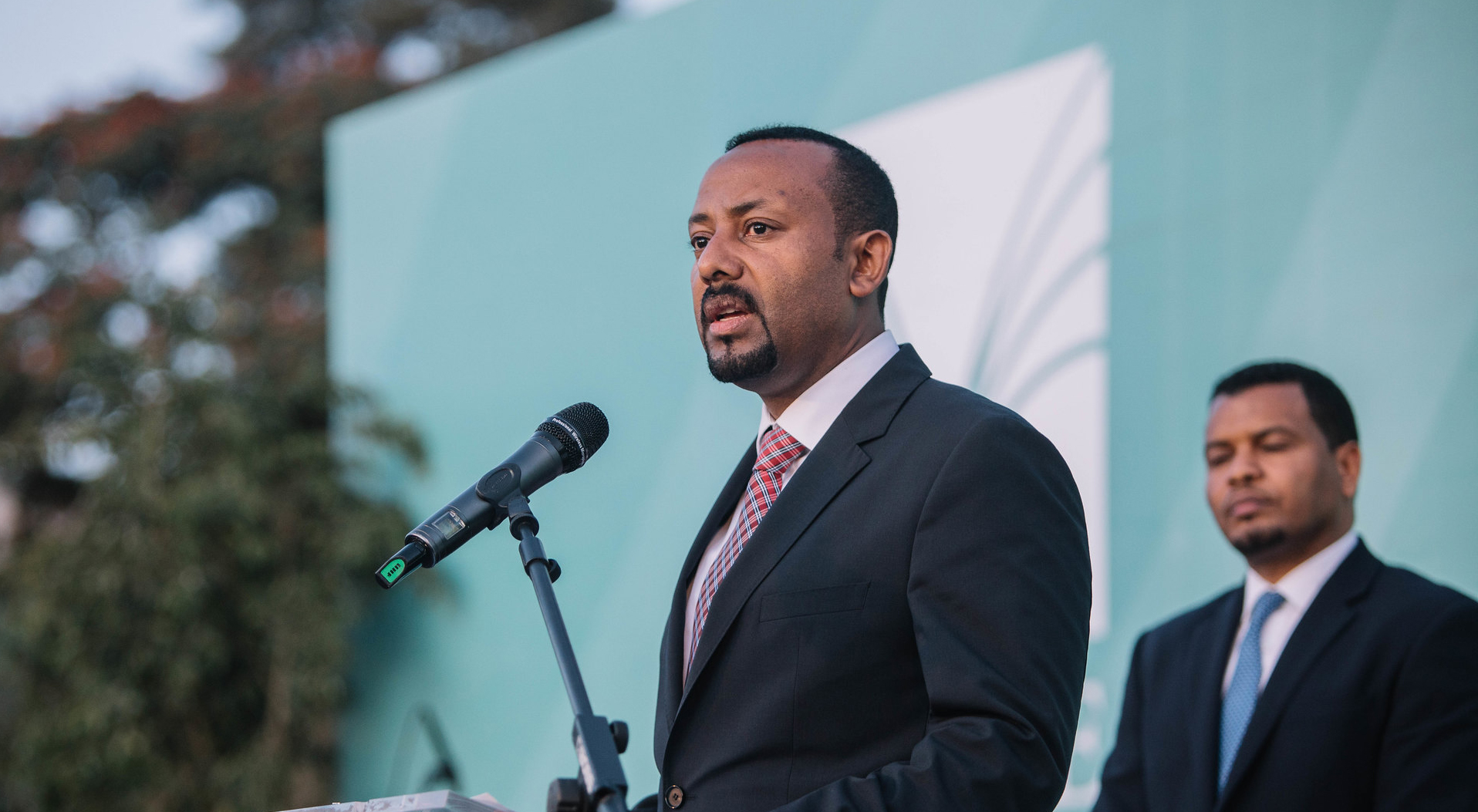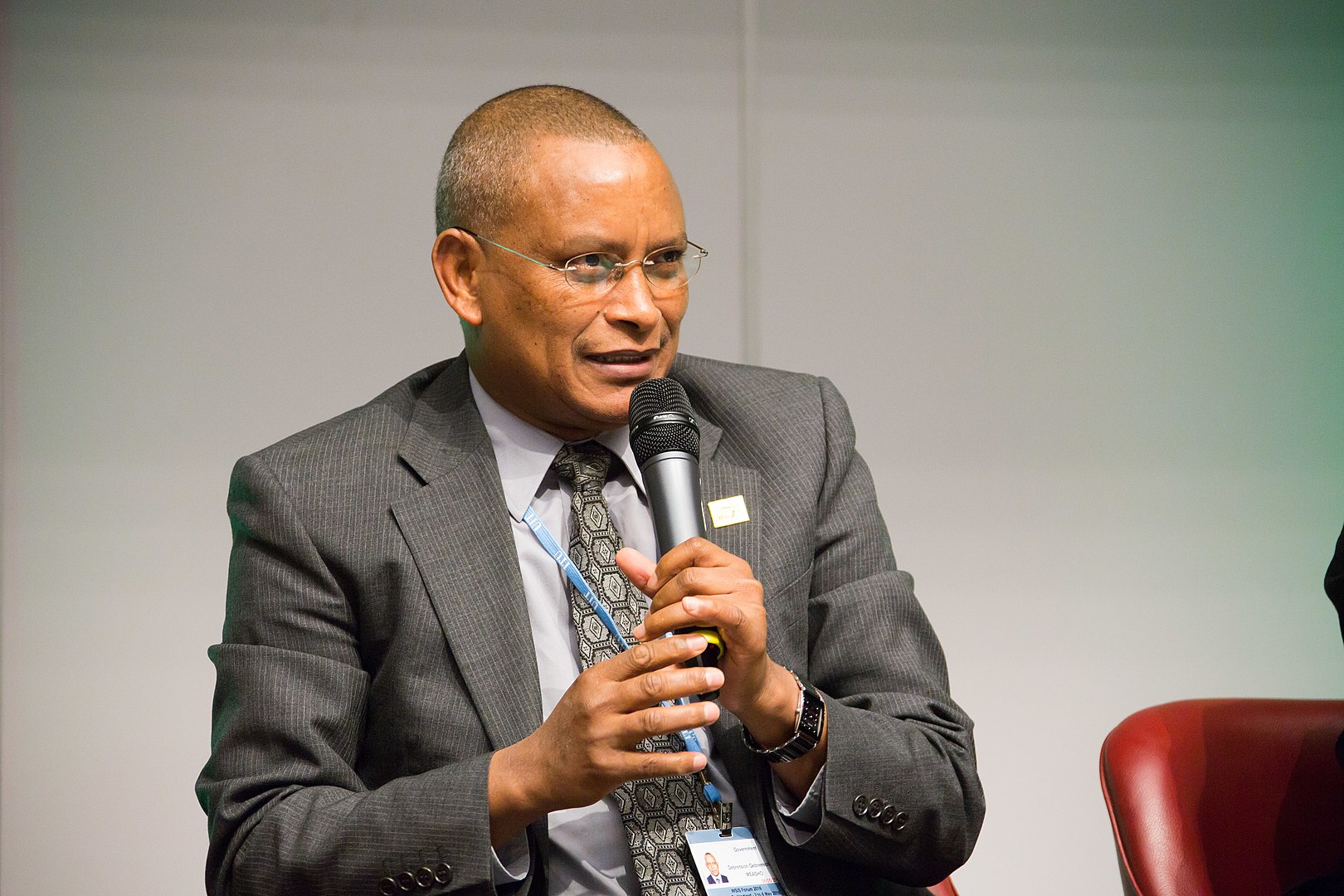News
Why has a conflict erupted between Ethiopia and Tigray?
Serious constitutional crisis has led to clashes between federal, Tigrayan forces · We explain how this dangerous situation has come about
How did the fighting start?
On 4 November the Ethiopian government declared a state of emergency in Tigray, in the north of the country along the Eritrean border, for a period of six months. The council of ministers said that “illegal and violent activities” in Tigray were “endangering [...] the constitutional order, public peace and security,” and that “the country’s sovereignty” was being threatened.
The decision came hours after Ethiopian Prime Minister Abiy Ahmed blamed the Tigray People’s Liberation Front (TPLF, Tigray’s ruling party) for having attacked an Ethiopian armed forces base with the aim of stealing artillery and military equipment.
On the evening of 4 November, first informations of clashes between the Ethiopian army and TPLF forces emerged. Even if the Ethiopian government cut off communications with Tigray, some reports —not independently confirmed— spoke of of armed clashes in several areas.
The events are the result of a power struggle in Ethiopia in which the central authorities in Addis Ababa and the TPLF are the main actors. Several analysts point out that, with the army’s intervention, Ethiopia risks sliding into civil war, or into a secessionist conflict in Tigray. Before commenting on this, it is worth reviewing how it got there.
Tigray and the Ethiopian federation
Tigray is one of the 12 federated units of Ethiopia (10 regional states and 2 cities). Since 1994, the African country has been ruled under a system called “ethnic federalism,” where each of the largest peoples —Oromo, Amhara, Tigrayan, and Somali— is assigned one of the main regional states. In Tigray, 95% of the population belongs to the Tigrayan people. Since its creation, the Tigray Regional State has been ruled by the TPLF, a Tigrayan nationalist party.
The TPLF was founded in 1975 as a political-military movement opposing Ethiopian communist dictatorship of Colonel Mengistu Haile Mariam. The TPLF joined the Eritrean independence fighters in the war that they had been waging against the Ethiopian regime since 1961. First, the TPLF stated its aim was achieving independence for Tigray; in 1978-79 the party somewhat watered down that demand, and pursued the toppling of Mengistu to bring about a change of regime in Ethiopia as a whole, which it achieved in 1991.
Having claimed victory in the war, the TPLF took power in Ethiopia. From 1991 to 2018 it led a coalition of Ethiopian parties (the Ethiopian People’s Revolutionary Democratic Front, EPRDF) that ruled the country uninterruptedly. TPLF leader Meles Zenawi led the Ethiopian government from 1991 until his death in 2012. The TPLF’s domination of the state apparatus and of important economic sectors caused resentment in other regions of the country, from where Tigrayan nationalists were accused of governing and exploiting the rest of Ethiopia. However, and despite the war against Eritrea, Meles remained in power, riding on economic growth experienced by Ethiopia under his rule, while at the same time suppressing political dissent.
The crisis between the Ethiopian government and the TPLF
In 2018, following a series of popular protests, Ethiopian Prime Minister Hailemariam Desalegn —political heir to Meles— resigned, being replaced by reformist Abiy Ahmed, despite opposition from the TPLF, which was weakened at the time by internal disputes and some distancing from the other parties of the EPRDF coalition. Abiy belonged to one of these parties, the Oromo Democratic Party (ODP).
Relations between the TPLF and the rest of the EPRDF soured, particularly after Abiy announced he would be reviewing the system of ethnic federalism and promoting Ethiopian national unity. Now, the TPLF feared losing its political, economic and military power —and accused Abiy of purging Tigrayans of government officers. The party also believed the autonomy of the Tigrayan Regional State would be endangered, and suspected that Abiy wished to impose a new Oromo-based domination in the state apparatus in Addis Ababa.
 Ethiopian Prime Minister Abiy Ahmed. / Image: Office of the Prime Minister of Ethiopia.
Ethiopian Prime Minister Abiy Ahmed. / Image: Office of the Prime Minister of Ethiopia.In 2019, Abiy merged the EPRDF coalition into a single party, the Prosperity Party (PP). At that point, the TPLF decided not to join the new party, which it viewed as a tool for Ethiopia’s return to centralist policies of the Haile Selassie and Mengistu eras, away from ethnic federalism that had prevailed over the past three decades.
The Abiy-TPLF row intensified in 2020, and ultimately became a constitutional crisis. Due to the covid-19 pandemic, Abiy decided to suspend all elections that were to take place in Ethiopia. The TPLF deemed that decision illegal, and went on to held a regional parliamentary election on 9 September —without the agreement of Addis Ababa— which it won virtually unopposed.
As a result, the Ethiopian government now considers the TPLF’s administration of the Tigray Regional State to be illegal. In October, Addis decided that a fund transfer that was to be sent to the Tigray government would be instead directed to municipal authorities. The TPLF government claimed that decision was tantamount to a “declaration of war.”
Can a full-scale war really begin?
It is not impossible. The TPLF controls a militia of its own that Crisis Group describes as “well-armed,” commanded by “former national army generals.” The Tigrayan government claims that the Ethiopian army’s northern command has defected to its side, which Addis Ababa denies.
University of Birmingham professor and expert in democratic processes in Africa Nic Cheeseman explained in a Twitter thread that a military confrontation would be “highly dangerous.” A “straightforward ‘win’” by the federal army cannot be taken for granted as “much of the country’s military capacity has been under the control of the TPLF.”
The possible involvement of neighbouring states must be reckoned with. Eritrea has good relations with the Addis Ababa government but has been at odds with the TPLF since the 1990s —recall again that Eritrea and TPLF-led Ethiopia fought a war from 1998 to 2000 that killed 100,000 people at least.
Can Tigray seek independence?
The TPLF says it does not want Ethiopia to break up. But its leader and acting president of the Tigrayan Regional State, Debretsion Gebremichael, warned: “We will never back down for anyone who is intending to suppress our hard-won right to self-determination and self-rule.” According to another Crisis Group report, since Abiy’s rise to power, the TPLF “has been concentrating on building consensus in Tigray” in preparation “for a scenario in which the region pushes for at least greater autonomy.”
In fact, the TPLF has never given up prospects for the exercise of the right of self-determination of the Tigrayan people. But of course, it froze such demands while it had the upper hand in the Ethiopian government.
 Debretsion Gebremichael. / Image: ITU Pictures - United Nations.
Debretsion Gebremichael. / Image: ITU Pictures - United Nations.An important detail, Ethiopia’s Constitution establishes a mechanism for secession for any of its member states, so if necessary the TPLF could initiate an independence process through it. However, the Addis Ababa government now considers the TPLF’s cabinet to be illegal, and would therefore oppose any attempt by the Tigrayan party to do so.
May the situation reverberate in other regional states?
Demands for self-determination in other Ethiopian regional states exist. Some groups could take advantage of the context of crisis caused by the war to try to advance their agendas. This is the case of Oromo groups opposed to Abiy who are calling for a greater role for the Oromo in the government of Ethiopia, or for enlarged autonomy, as well as of Amhara groups who are calling for the annexation of several border territories to their regional state —some of them in Tigray. In the case of the Southern Nations, Nationalities and Peoples Region, the Wolayta people are calling for separation from this regional state to constitute their own, as the Sidama did in 2019-20. Secessionist tensions in the Somali Regional State have also erupted in the past.
Is there any possibility of mediation to prevent war?
In an August report, Crisis Group pointed to the possibility that “prominent African statesmen with strong ties to both the TPLF and Abiy” could act as mediators between them, and pointed to South African President Cyril Ramaphosa in particular. AFP said that the African Union had started contacts with both actors to try and stop the armed clashes.
Ethiopian and Somali media explained earlier this week that a European Union team, led by EU High Representative for Foreign Affairs and Security Policy Josep Borrell, had launched separate talks with Abiy and Debretsion. In a statement, Borell called on “all parties” to “reduce tension” and “abstain from provocative military deployments.”
In June, the mediation of several Ethiopian religious leaders also attempted to bring positions closer.
